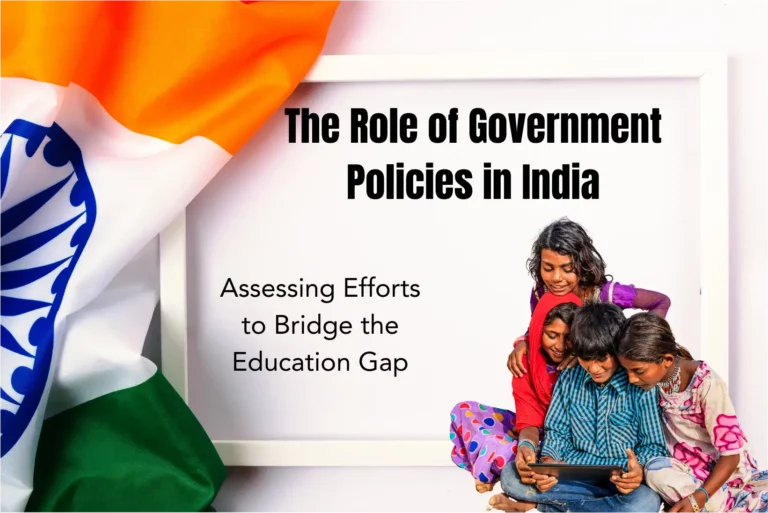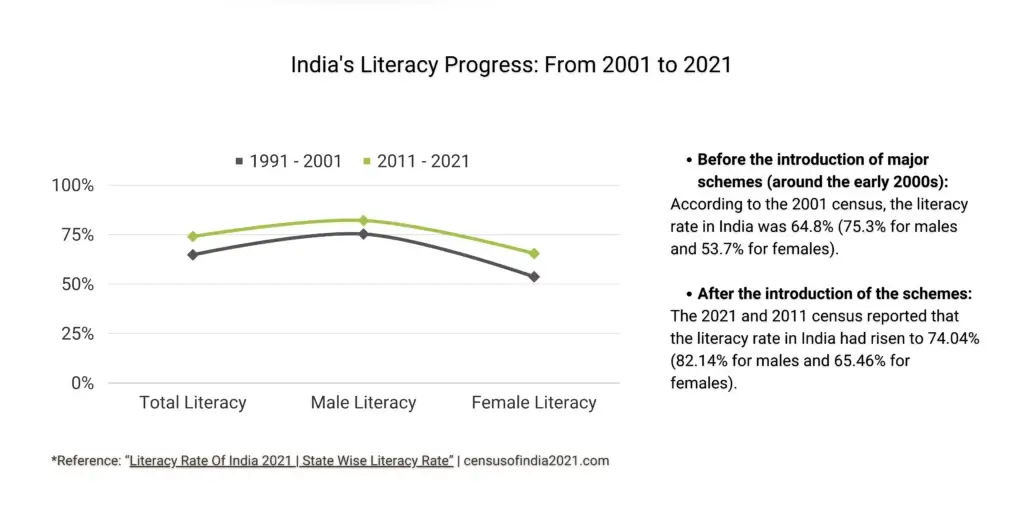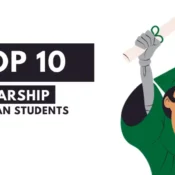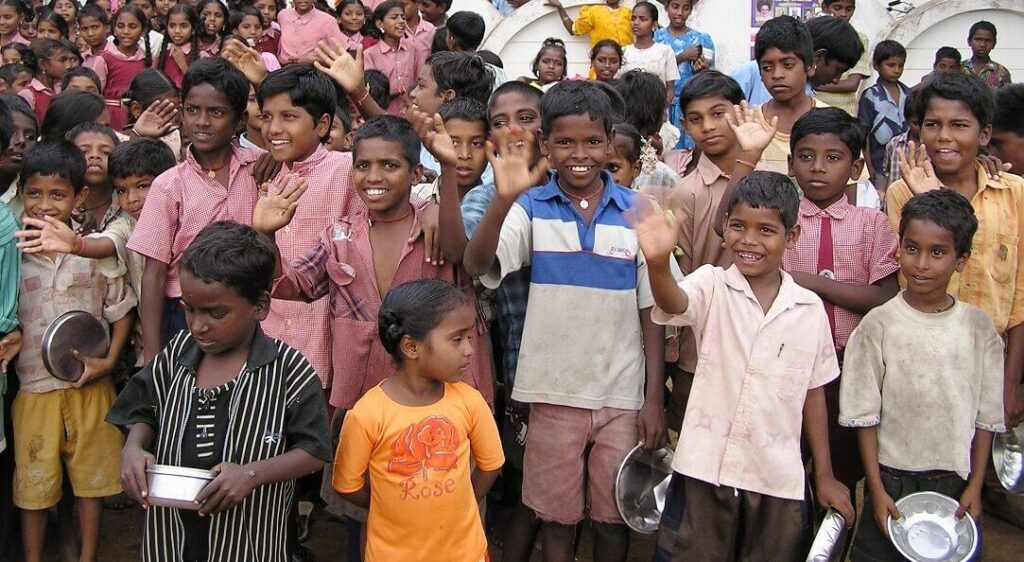
The Role of Government Policies in India: Assessing Efforts to Bridge the Education Gap
I. Unraveling India’s Education Gap
India, a diverse and vast nation, exhibits considerable disparities. While some regions house premier institutions and research hubs, many remote areas still witness children deprived of basic primary education. This vast difference signifies our education gap. Such a gap doesn’t merely represent educational disparity but also hints at socio-economic challenges that persist.
II. Children’s Education in India: How Government Policies Have Shaped It
Dating back to post-independence days, education government policies in India have been critical in shaping the nation’s educational trajectory. These policies, evolving with time, were aimed at ensuring education wasn’t a luxury but a basic right for every Indian child. From building infrastructure in remote villages to introducing digital classrooms in urban schools, these policies have covered a broad spectrum.

III. Major Government Schemes Impacting School Education in India
To tackle the vast education gap, the government introduced various schemes:
- Sarva Shiksha Abhiyan (Universal Education Movement): Initiated in the early 2000s, this visionary project aimed at universalizing primary education. Its effects were profound; by 2021, it benefited over 200 million children. And the numbers have kept growing.
- Right to Education Act: This 2009 act was a game-changer. It didn’t just emphasize education; it declared it as a fundamental right for every child aged 6-14. With its enforcement, almost every state this year boasted nearly 100% enrollment in primary schools.
- Mid-Day Meal Scheme: It’s an initiative that showcased the government’s holistic approach. Recognizing that health is pivotal for education, this scheme ensured that students in government schools received a nutritious meal. Today, it supports approximately 120 million children daily.
- Rashtriya Madhyamik Shiksha Abhiyan: This scheme put secondary education in the spotlight, focusing on quality enhancement and boosting enrollment rates. The results? Secondary school enrollment is on a constant rise.
Analyzing these initiatives, one realizes that these aren’t just policies; they’re India’s commitment to bridging the education gap. However, gauging the effectiveness of government policies, one can deduce that there’s still work ahead.
Amidst these massive government strides, platforms like Skopick.com shine. Their dedication to educational fundraising ensures that monetary constraints don’t stifle dreams.

IV. Inside Classrooms: New Teaching Ways and Fixes
Change isn’t limited to policies; it’s vividly evident inside classrooms. Schools are now discarding rote learning and adopting effective classroom strategies for closing the gap. The emphasis is on understanding rather than memorizing. Incorporation of technology, project-based learning, and experiential teaching methods are becoming commonplace. And for those who need that extra push? Tailored interventions for bridging learning gaps are in place, ensuring that every child gets the necessary attention.
V. Wrapping Up: Celebrating Gains and Looking Ahead
To conclude, India’s journey in education, significantly shaped by education government policies in different eras, is a blend of achievements and challenges. The journey to ensure that every child in India gets quality education is a continuous one. We’ve made leaps, but the goal post of complete literacy and quality education for all is still ahead. The combined effectiveness of government policies, societal involvement, and platforms like Skopick.com will be crucial in realizing this dream.
One response to “The Role of Government Policies in India: Assessing Efforts to Bridge the Education Gap”
Revolutionizing Indian education is undoubtedly a monumental task, but it’s also rife with opportunities for growth and innovation. From what I’ve observed, one of the key factors lies in establishing trusted educational institutions around JP Nagar and beyond. These institutions not only provide quality education but also foster a sense of reliability and credibility within the community. By addressing the challenges head-on and leveraging these opportunities, we can truly transform the landscape of education in India, ensuring every student has access to the resources and support they need to thrive.
Recent Posts
A Quick Guide on How to Verify NGOs and Foundations
Best Places to Donate Your Used or Unwanted Books
All Categories
- Blogs (27)
- Book4all (3)
- CSR (1)
- Scholarship (4)
- Uncategorized (1)










Leave a Reply